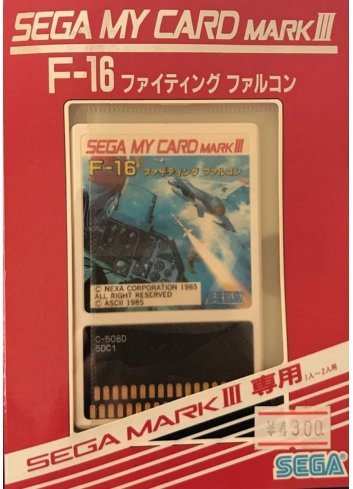
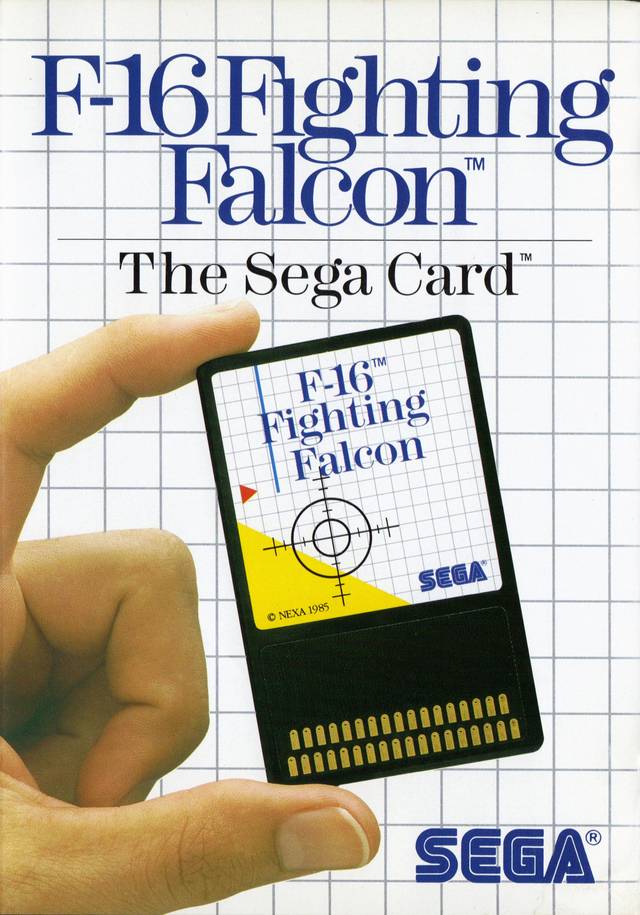
PLAYERS: 1 (2 w/ Mark III Link Cable – info unknown)
PUBLISHER: Sega
DEVELOPER: Nexa (port by Sega)
GENRE: Flight-based game
RELEASE DATE: 12/22/85 – (JP), 1986 – (US), 10/1987 – (EU – released as F-16 Fighter)
Flight simulators are not games, there, I said it. And you know what? It doesn’t matter. If you enjoy flight simulators, you’re not concerned with blowing up other fighter jets or destroying nuclear reactors in Russia/Iraq/some country opposed to freedom. You want blue skies, fresh air, and all the dials, panels, and whistles that come with operating real aircraft.
If you’re passionate about flight sims, you also own a computer and an extra-large novelty-sized flight stick. Nobody buys consoles to play flight simulators, or even flight-based games with sim properties. It took publishers and developers some time to understand this in the 80s and 90s, hence games like F-16 Fighting Falcon for the Master System. While your main task is to destroy MIG-25 Foxbats across a series of ten levels, there are many points across the game where you’re hovering in the chunky blue yonder with your F-16 Falcon, waiting for something to happen.
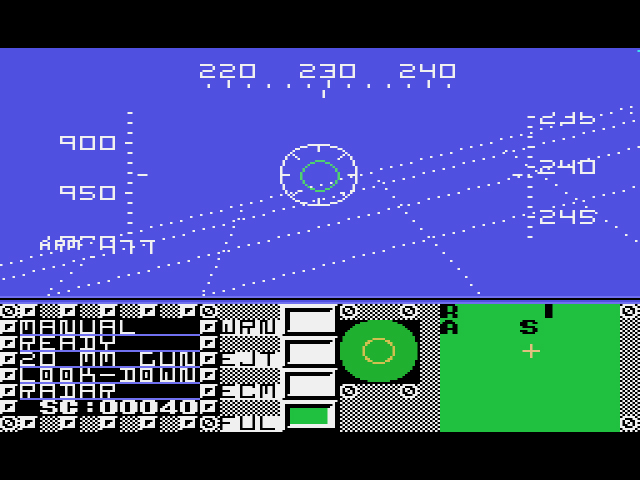
While you’re waiting for Foxbats to appear on your radar, take a looksee at the control panel. Pressure Altimeter? You bet. Keep that Falcon’s pressure low or she’ll explode, don’tcha know. Pilot Mode will let you know if you’re controlling every facet of the plane or if you’re rockin’ Autopilot. Autopilot controls your Falcon for you (every function except weapons), which makes the game that much more mind-numbing. Different abbreviations litter the panel, like WRN (Warning, you’re being fired at!), EJT (Ejection, which you’ll use to escape imminent death), R, A, I, and S (Range, Altitude, Interception and Speed, in regards to where the enemy aircraft is located and how fast it’s traveling). There’s other doohickeys to gander at, but the majority of it is self-explanatory if you’ve played a vidya game or two.
What elevates F-16 Falcon Fighter above other gutter trash flight games is its outlandish control scheme. In order to play the game as it was meant to be played, you need two Master System controllers for one player. Controller 1 uses the directional pad for movement, Button 1 switches between your missiles and 20mm bullets, and Button 2 fires said weaponry. Controller 2 is about the details: the directional pad accelerates and decelerates, Button 1 is used for Electronic Counter-Measures (used to prevent enemy missiles from hitting you) and Button 2 locks-on to a different target, should another target be in your point-of-view.
You are correct to mock these controls. There is no reason any game should require one person to utilize two controllers at a time. I suppose you could enlist a friend to help you, but you know they’d be trying to make you crash the entire time (that’s just what friends do). To steer this Falcon proper, you’ll need a lot of multivitamins and an extra set of hands a la Goro.
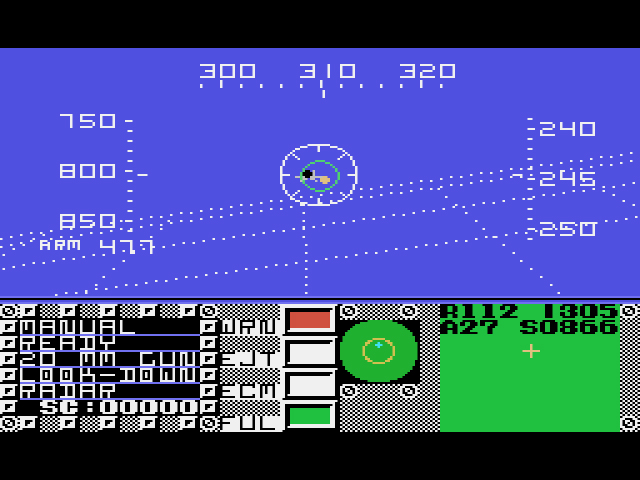
F-16 Falcon Fighter isn’t really a legitimate flight sim. For one thing, there’s objectives. Well, an objective (those MIG Foxbats won’t blow themselves up), but even a singular task is enough to distinguish it from the Microsoft flight sims of yore that people, uh, “play.” Still, Sega’s obsession with the titular aircraft results in painful periods of inactivity. The implication during these down times seems to be: “look at the painstaking detail put into the Falcon! Doesn’t the attention to the aircraft’s interior warrant the lack of gameplay?” Depends on who you ask, I suppose, but the limited 8-bit atmosphere doesn’t immerse you as well as the game thinks it does. And when all the Foxbats have been blown to the bosom of the Pacific Ocean, what you’re left with is a lone fighter in the sky, immaculately crafted, but with little reason to exist.
D

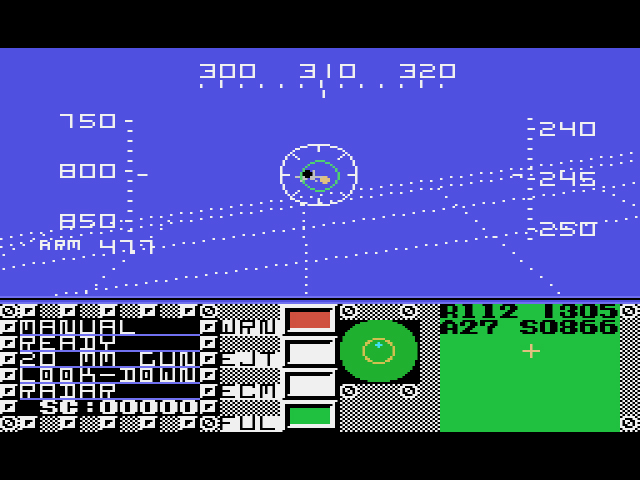
6 replies on “F-16 Fighting Falcon (Mark III / MS, 1985-86)”
I briefly played this a few months ago on a friends console. Being a big aviation enthusiast and a flight sim fanatic I was curious at this title. I have to say however it is a step too far for the Mark III/SMS. I have to applaud Sega’s ambition but it was too early for a title like this.
“Too early” is probably the most accurate description for this game, and for any other early console flight games.
For some reason I imagine a lot of lonely people dorks sitting up late at night playing these types of games, pretending the other planes are being flown by school bullies, teachers, or therapists. “Take that, Mom! Take that, Dad! Send me to a psychiatrist, will you? Take that, Dr. Sally Waxler!”
I can’t think of much interesting to say about this game. Other than this is the one game I believe that is not backwards compatible on the Mega Drive with the power base converter because the Mega Drive doesn’t support the video output mode this game uses. Can only play this on real hardware. Or a similar approximation …
That last sentence was really poetic. I had to re-read it a couple times…
then my work is done… *straps on Rocketeer suit and flies away*